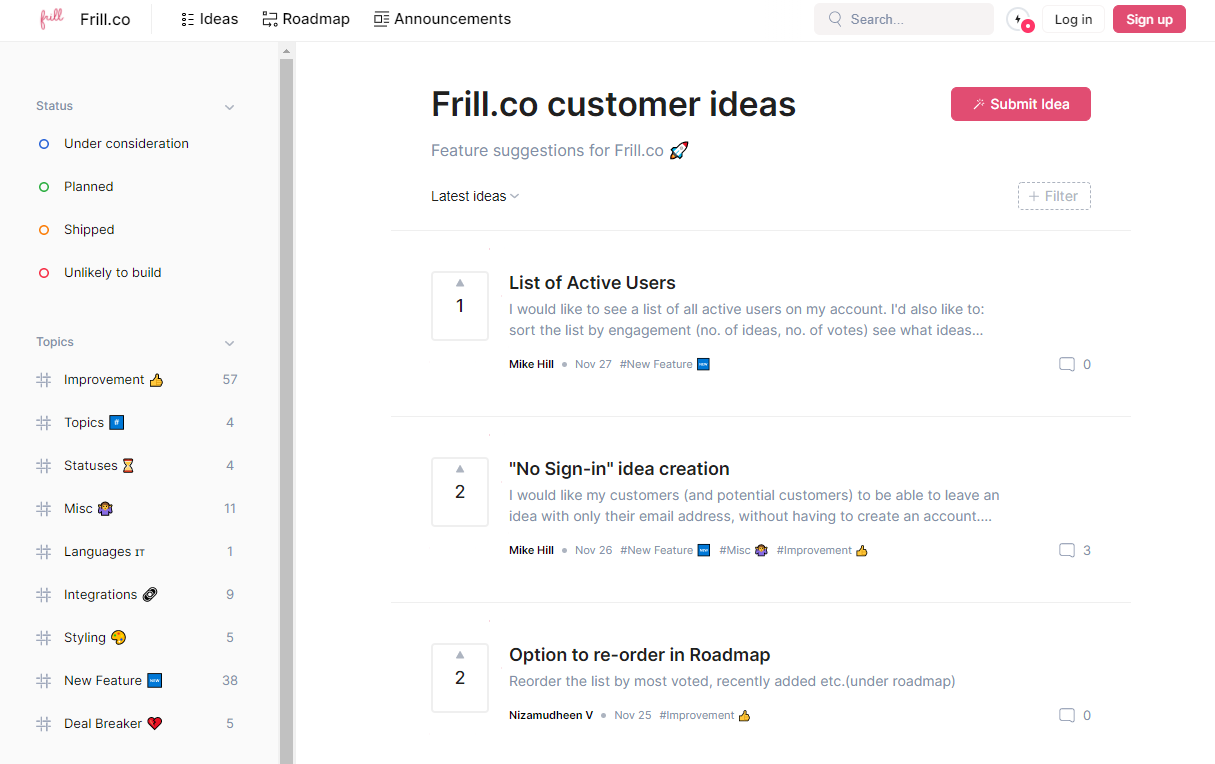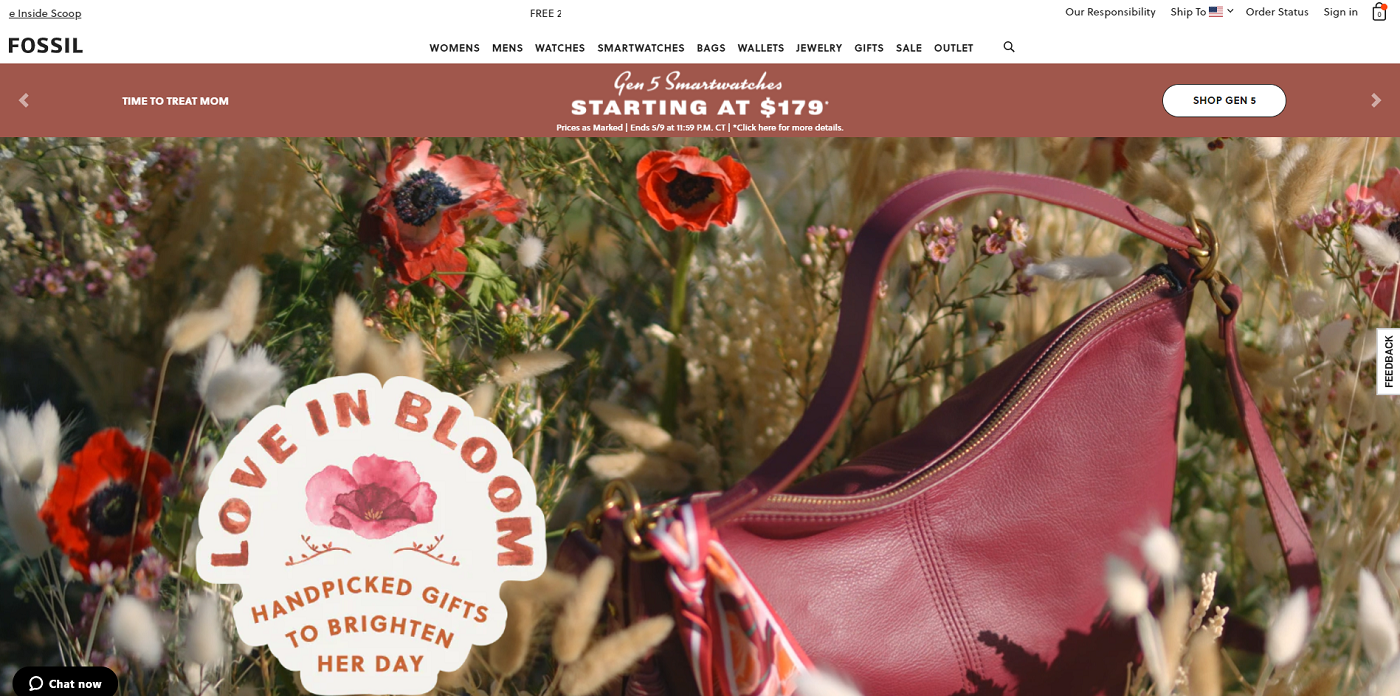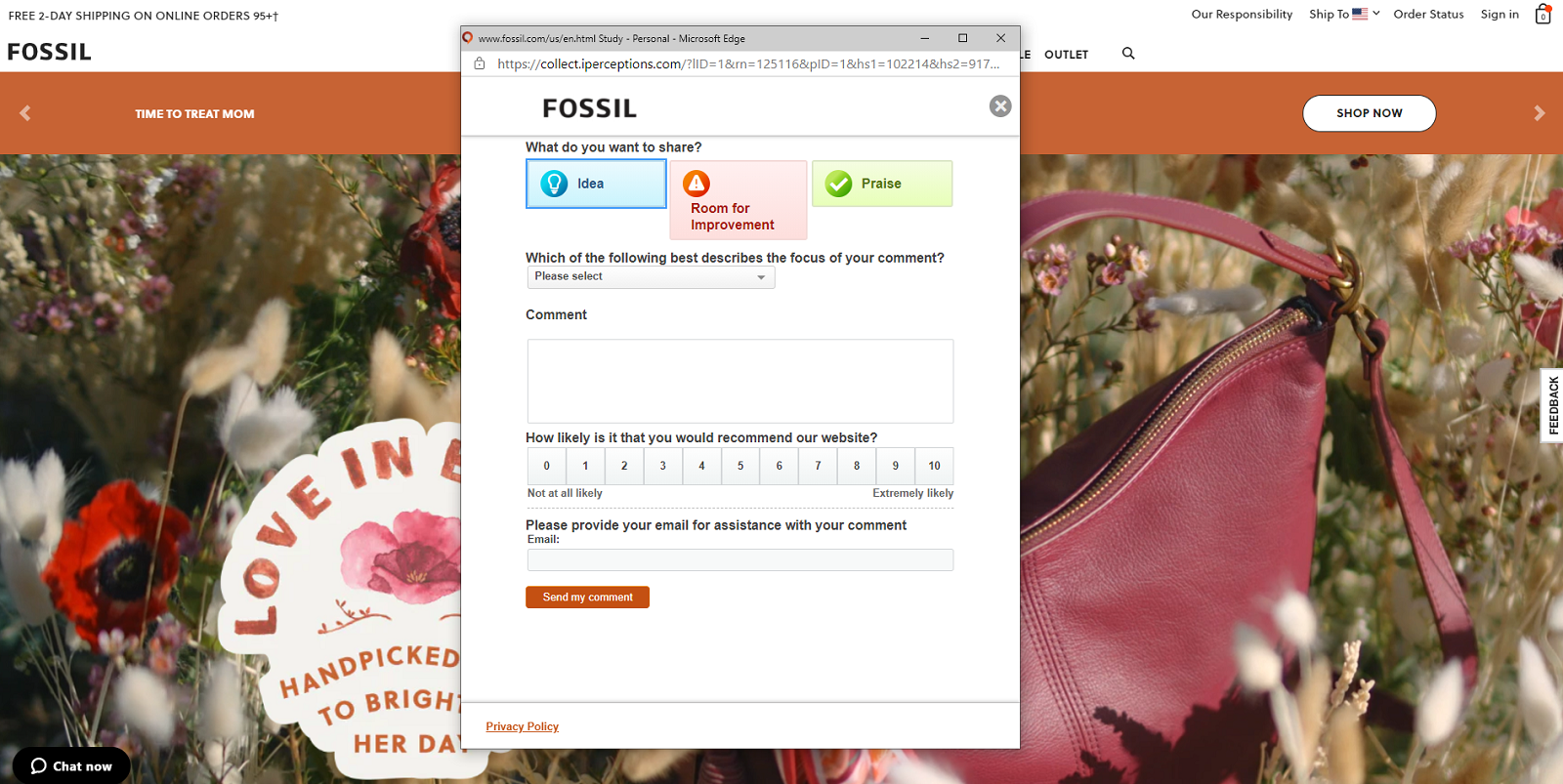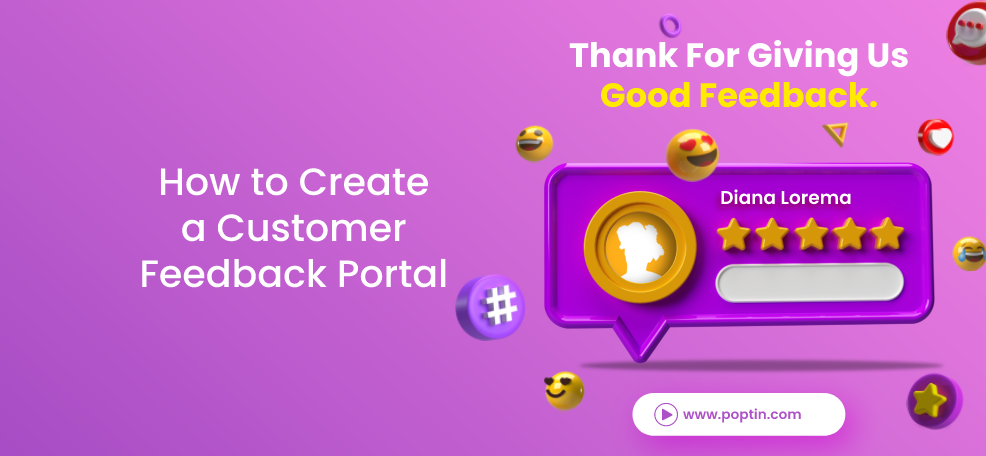Where would our companies be if we didn’t listen to our customers? In the graveyard of failed businesses, that’s where. Customer feedback is essential for delivering products and services to your customers that they actually want to pay for and to make sure that you don’t lose the customers you already have.
But it’s hard to get customers to fill out surveys, and it’s time-consuming to approach them for research interviews.
So how should you collect feedback?
In this post, we dive into options for creating a feedback portal that will help you organize customer feedback in one place.
What is a customer feedback portal?
A customer feedback portal is an app, widget, or website that customers can use to give their business feedback at any time.
It’s very different from a survey, market research session, or focus group because those all take place during a certain time. On the other hand, a feedback portal should be easy for customers to find and use whenever they want.
Whenever they get an idea or are frustrated about something, they can visit your portal and submit a message.
Here’s an example of a board where customers can not only submit ideas but also see the ideas of other customers and comment on those.

What types of companies need a customer feedback portal
56% of customers say that they stay loyal to the brands that “get them.” If you’re not actively collecting feedback, you may not “get” your customers as well as you assume.
SaaS companies, eCommerce companies, and event hosts can all benefit from using a dedicated portal to proactively collect feedback from customers.
Here’s an example from popular accessories brand Fossil.

If you click on “Feedback” on the right side of their website, you’ll be taken to their feedback portal, which asks if you want to share one of the following:
- Idea
- Room for improvement
- Praise

The benefits of having a feedback portal are:
- One place to store feedback
- Get feedback coming in regularly (not just when you send a survey)
- Ask customers clarifying questions and interact with them
- Easily and automatically categorize incoming feedback
While many businesses can and should collect feedback in some way, SaaS companies are the best poised to do this with a portal. Why? Their customers are already accustomed to interacting with the brand using the software. On the other hand, eCommerce customers might be more likely to respond to an email or survey than to submit feedback with a website portal.
However, because it’s free to create a portal, you could always give it a shot and see if your customers use it. Below, we’ll show you how to create one and how to ask customers to use it.
How to create your own portal for collecting customer feedback
Since 65% of a company’s business comes from existing customers, it’s really important to know what your customers want.
You can use a free website feedback tool to create the portal, or you can custom code something. Some popular free and affordable portals that don’t require custom coding include Frill, Hellonext, and Nolt.
Custom coding is time-consuming and costly but can allow you to set up the portal exactly how you want it. Here’s an example of a portal created with Qualtrics on Mailchimp’s website. When you click “Feedback” it opens up a sidebar with questions.

Your customers should not need to create an account to share an idea.
Here are some options for easily collecting ideas:
- Anonymous – Customers can simply submit an idea or a piece of feedback without having to leave their name or create an account.
- With their login to your platform – If you are a SaaS or eCommerce business (or other business that has user accounts), you can make use of a single sign-on (SSO). Your customers can deliver feedback using their sign-in credentials for your SaaS product or eCommerce website, and won’t need a separate login.
Make sure that you choose feedback software that is set up using the method you want, or that allows for both options.
Next, it’s time to start collecting the feedback.
How to tell customers about the portal
Of course, creating and customizing your customer feedback portal is only the beginning. You also need to make sure that your customers know about it.
You should use multiple communication channels to announce your new portal and make it easy for customers to access at any time.
Here are some ideas:
- Email announcement – Send out a broadcast email to your email subscribers. You could send to your entire list, or segment out only customers who have been on your list for at least two months.
- In-app widget – With many feedback tools, you can use an in-app widget to notify people that they can submit feedback whenever they are logged in. It will be a little tab that people can click on to navigate to your idea board.
- On-site pop-up – For the first week that you launch your customer feedback portal, use a Poptin pop-up to let your website visitors know. Set it to show only after someone has been on the website for 90 seconds.
- Website banner announcement – You could set a small, narrow banner across the top of your website so that website visitors see a link to the portal. Keep this on your website for 1 to 2 weeks.
- Email newsletter footer – In the footer of your email newsletter, include a link to your portal asking customers to give their feedback on your products.
- Blog post announcement – Create a blog post announcing your new portal. You can link to this from the methods above and share it on social media.
- Social media posts – Use your top social media channels to promote your new portal, so that more of your audience and customers know they can give you feedback.
How to sort and manage the incoming feedback
Because you’re collecting feedback in a dedicated portal, it will be a lot easier to deal with. If you do get feedback from somewhere else (a social media comment, for example), you can manually add the idea to your board so you have everything in one place.
For each idea that comes through, you’ll want to consider whether it is worth addressing.
You should plan to have a weekly or bi-weekly team meeting with all stakeholders to discuss the feedback that your customers have given you.
If you plan to address that suggestion, you should let the customer know. If you can address it in a few days, just tell them after it is complete. If it will take weeks or months, comment on the idea they submitted and let them know the approximate timeline.
If you don’t plan to address an individual piece of feedback, you should also let the customer know. Provide a polite and simple response explaining why you can’t address it.
If you use a feedback portal that includes a feature for back-and-forth comments with customers, here are some examples of what you could say if you don’t plan to act on that feedback:
- Thanks for taking the time to give us this feedback. Unfortunately, we don’t have enough customers requesting this right now, but we will circle back to this idea in 6 months.
- Thanks for taking the time to give us this feedback. Unfortunately, after considering it, we realized that the use case is too small, and not enough customers also need this feature, so we won’t be able to build it at this time.
- Thanks for taking the time to give us this feedback. Unfortunately, we don’t have the resources to build this at this time, but we do have a great workaround. Check out this tutorial.
How to communicate your product improvements to all customers
Not only should you communicate with the people who provided the feedback, but you should also let all of your customers know of product updates.
You can do this with an announcement roll. This is different from a blog roll because it’s only for product announcements. So, customers can visit this when they want to see what has changed. Or, you can create a blog post category called “announcements” if you don’t want to make a separate announcement roll.
You can create a new post for each announcement, no matter how big or how small.
Customer feedback is essential towards building products that customers love. When you create a dedicated portal for this feedback, it’s a lot easier to collect and manage it.
About the author

Dayana Mayfield heads up content marketing for Frill, a simple customer feedback, roadmaps, and announcements tool for SaaS companies. When not writing, she can be found swimming or hiking at Lake Tahoe.




